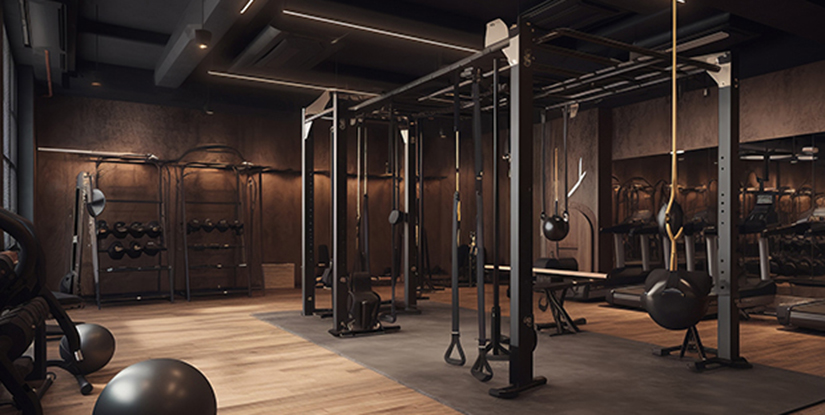Gym Fitness Equipment: Guide to Selection, Maintenance & ROI

Gym Fitness Equipment: Strategic Overview
Selecting and managing gym fitness equipment requires a balance of performance, durability, safety, and return on investment. Whether outfitting a commercial facility, a corporate wellness center, or a home gym, equipment decisions directly affect member satisfaction, retention, and operational costs. This guide provides a practical framework to evaluate, procure, and maintain fitness assets to optimize user experience and long-term value.
Core Categories of Equipment
- Cardio Machines — treadmills, ellipticals, stationary bikes, rowing machines, and ski trainers. Cardio equipment should offer adjustable intensity, reliable monitoring, and easy-to-service components.
- Strength Equipment — selectorized machines, plate-loaded stations, free weights, and racks. Choose ergonomically designed pieces that support progressive overload and correct movement patterns.
- Functional Training — cable systems, rig stations, kettlebells, battle ropes, plyo boxes, and suspension trainers. Functional gear increases versatility and supports group classes and high-intensity interval training (HIIT).
- Accessories — mats, medicine balls, resistance bands, foam rollers, and recovery tools. Accessories extend programming possibilities and improve member engagement.
Key Selection Criteria
- Durability and Warranty — prioritize commercial-grade frames, bearings, and electronics. Longer warranties and clear parts support reduce lifecycle costs.
- User Interface and Connectivity — modern consoles with infotainment, heart-rate integration, and club management compatibility improve user experience and performance tracking.
- Footprint and Layout — optimize spatial planning for traffic flow, safety clearances, and visibility. Zone equipment by function to facilitate programming and supervision.
- Ergonomics and Adjustability — ensure machines accommodate diverse body sizes and mobility levels; intuitive adjustments reduce misuse and injury risk.
- Maintenance Requirements — favor designs with standardized parts and accessible service points; implement preventive maintenance schedules to avoid downtime.
Procurement and Budgeting
Establish a phased procurement plan: prioritize high-use cardio and strength staples, then expand functional and specialty offerings. Evaluate total cost of ownership, including shipping, installation, flooring, and servicing. Consider certified refurbishers or lease-to-own models to manage capital expenditure while maintaining quality.
Safety and Compliance
Safety is non-negotiable. Comply with local regulations for emergency access, electrical installations, and fire safety. Provide clear instructional signage and include inspection logs for each piece of equipment. Staff should be trained in basic equipment checks and emergency response.
Maintenance Best Practices
- Daily: quick visual inspections and sanitation of high-touch surfaces.
- Weekly: tighten hardware, lubricate moving parts, and test electronics.
- Monthly: comprehensive checks of belts, pulleys, cables, and structural integrity.
- Annual: professional servicing and parts replacement as recommended by manufacturers.
Maximizing Member Value and ROI
Align equipment choices with member demographics and programming strategy. High-utilization machines and multi-functional rigs deliver better ROI. Use surveys and utilization data to retire or replace underused items. Offer education sessions to increase competent use and reduce injury-related attrition.
Environmental and Space Considerations
Choose energy-efficient cardio machines and durable flooring to reduce long-term operational costs. Plan for ventilation, acoustics, and lighting to enhance comfort. Modular layouts enable future expansion without major disruption.
Conclusion
Investing in the right gym fitness equipment is a strategic decision that affects safety, member satisfaction, and financial performance. Prioritize commercial-grade durability, ergonomic design, and serviceability. Implement structured maintenance and data-driven replacement strategies to sustain value over time.
FAQs
- What equipment is essential for a commercial gym? — Treadmills, bikes, ellipticals, multi-station strength units, racks, and free weights.
- How often should equipment be serviced? — Daily checks, weekly minor service, and annual professional maintenance.
- Commercial vs home-grade: which to choose? — Use commercial-grade for public facilities; home-grade may suffice for personal use but has lower durability.
- How do I plan gym layout? — Zone by function, ensure clear traffic flow, and maintain safety clearances.
- Are refurbished machines a good option? — Certified refurbishers can be cost-effective if warranties and parts support are provided.
- What is total cost of ownership? — Purchase price plus installation, flooring, delivery, repairs, and maintenance over lifespan.
- How to extend equipment lifespan? — Regular maintenance, proper use, and prompt repair of worn parts.
- Which machines drive member retention? — Reliable cardio machines and versatile strength systems that support progressive programs.
- How to choose a vendor? — Evaluate product quality, warranty, service network, and user reviews.

